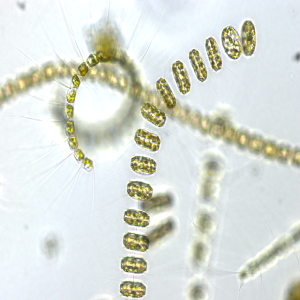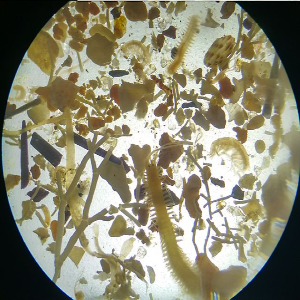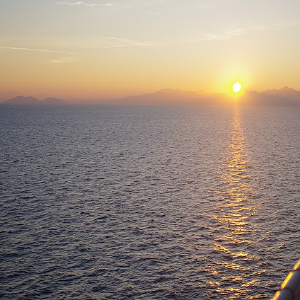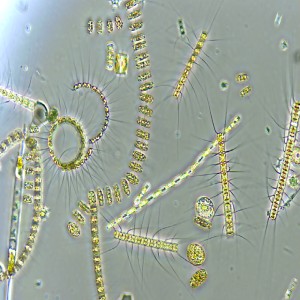Deep-sea benthic ecosystems waste nothing and recycle everything, even viruses
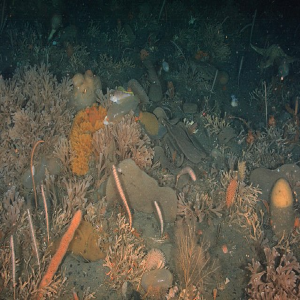
Accepted: 24 January 2023
HTML: 25
All claims expressed in this article are solely those of the authors and do not necessarily represent those of their affiliated organizations, or those of the publisher, the editors and the reviewers. Any product that may be evaluated in this article or claim that may be made by its manufacturer is not guaranteed or endorsed by the publisher.
Viruses are the most abundant biological entities of the global ocean and have a pervasive role in marine ecosystems because, being a major cause of mortality, they module the functioning of food webs, and biogeochemical cycling. This role is due not only to their ability to infect and lyse marine organisms but also to the decomposition of their particles (viral decay). The organic matter of viral origin, indeed, can be recycled by benthic organisms thus representing an additional important food source for their metabolism, especially in deep-sea sediments, characterized by very low availability of trophic resources. This short note will present an overview of the available information on viral decay in deep-sea benthic ecosystems.
Cai L, Jørgensen BB, Suttle CA, He M, Cragg BA, Jiao N, Zhang R, 2019. Active and diverse viruses persist in the deep sub-seafloor sediments over thousands of years. ISME J. 13:1857-1864. DOI: https://doi.org/10.1038/s41396-019-0397-9
Corinaldesi C, 2015. New perspectives in benthic deep-sea microbial ecology. Front Mar Sci. 2:17. DOI: https://doi.org/10.3389/fmars.2015.00017
Corinaldesi C, Dell'Anno A, Danovaro R, 2007. Viral infection plays a key role in extracellular DNA dynamics in marine anoxic systems. Limnol Oceanogr. 52:508-516. DOI: https://doi.org/10.4319/lo.2007.52.2.0508
Corinaldesi C, Dell'Anno A, Danovaro R, 2012. Viral infections stimulate the. metabolism and shape prokaryotic assemblages in submarine mud volcanoes. ISME J. 6:250-1259. DOI: https://doi.org/10.1038/ismej.2011.185
Corinaldesi C, Dell'Anno A, Magagnini M, Danovaro R, 2010. Viral decay and viral production rates in continental-shelf and deep-sea sediments of the Mediterranean Sea. FEMS Microbiol Ecol. 72:208-218. DOI: https://doi.org/10.1111/j.1574-6941.2010.00840.x
Corinaldesi C, Tangherlini M, Luna GM, Dell'Anno A, 2014. Extracellular DNA can preserve the genetic signatures of present and past viral infection events in deep hypersaline anoxic basins. Proc Royal Soc B: Biol Sci. 281:20133299. DOI: https://doi.org/10.1098/rspb.2013.3299
Danovaro R, Corinaldesi C, Dell'Anno A, Fuhrman JA, Middelburg JJ, Noble RT, Suttle CA, 2011. Marine viruses and global climate change. FEMS Microbiol Rev. 35:993-1034. DOI: https://doi.org/10.1111/j.1574-6976.2010.00258.x
Danovaro R, Corinaldesi C, Dell’Anno A, Rastelli E, 2017. Potential impact of global climate change on benthic deep-sea microbes. FEMS Microb Lett. 364:fnx214. DOI: https://doi.org/10.1093/femsle/fnx214
Danovaro R, Corinaldesi C, Filippini M, Fischer UR, Gessner MO, Jacquet S, et al., 2008a. Viriobenthos in freshwater and marine sediments: a review. Fresh Biol. 53:1186-1213. DOI: https://doi.org/10.1111/j.1365-2427.2008.01961.x
Danovaro R, Corinaldesi C, Luna GM, Magagnini M, Manini E, Pusceddu A, 2009. Prokaryote diversity and viral production in deep-sea sediments and seamounts. Deep Sea Res II. 56:738-747. DOI: https://doi.org/10.1016/j.dsr2.2008.10.011
Danovaro R, Dell’Anno A, Corinaldesi C, Magagnini M, Noble R, Tamburini M, et al., 2008b. Major viral impact on the functioning of benthic deep-sea ecosystems. Nature. 454:1084-1087. DOI: https://doi.org/10.1038/nature07268
Danovaro R, Dell’Anno A, Corinaldesi C, Rastelli E, Cavicchioli R, Krupovic M, et al., 2016. Virus-mediated archaeal hecatomb in the deep seafloor. Sci Adv. 2:e1600492. DOI: https://doi.org/10.1126/sciadv.1600492
Danovaro R, Snelgrove PV, Tyler P, 2014. Challenging the paradigms of deep-sea ecology. Trends Ecol Evol. 29:465-475. DOI: https://doi.org/10.1016/j.tree.2014.06.002
Dell’Anno A, Corinaldesi C, Danovaro R, 2015. Virus decomposition provides an important contribution to benthic deep-sea ecosystem functioning. Proc Nat Acad Scie. 112:E2014-E2019. DOI: https://doi.org/10.1073/pnas.1422234112
Dell'Anno A, Corinaldesi C, Magagnini M, Danovaro R, 2009. Determination of viral production in aquatic sediments using the dilution-based approach. Nat Prot. 4:1013-1022. DOI: https://doi.org/10.1038/nprot.2009.82
Gerba CP, 1984. Applied and theoretical aspects of virus adsorption to surfaces. Adv Appl Microb. 30:133-168. DOI: https://doi.org/10.1016/S0065-2164(08)70054-6
Glud RN, Mathias M, 2004. Virus and bacteria dynamics of a coastal sediment: implication for benthic carbon cycling. Limnol Oceanogr. 49:2073-2081. DOI: https://doi.org/10.4319/lo.2004.49.6.2073
Middelboe M, Glud RN, Filippini M, 2011. Viral abundance and activity in the deep sub-seafloor biosphere. Aquat Microb Ecol. 63:1-8. DOI: https://doi.org/10.3354/ame01485
Middelburg JJ, Meysman FJ, 2007. Burial at sea. Science. 316:1294-1295. DOI: https://doi.org/10.1126/science.1144001
Parada V, Sintes E, van Aken HM, Weinbauer MG, Herndl GJ, 2007. Viral abundance, decay, and diversity in the meso-and bathypelagic waters of the North Atlantic. Appl Env Microb. 73:4429-4438. DOI: https://doi.org/10.1128/AEM.00029-07
Sakoda A, Sakai Y, Hayakawa K, Suzuki M, 1997. Adsorption of viruses in water environment onto solid surfaces. Wat Sci Tech. 35:107-114. DOI: https://doi.org/10.2166/wst.1997.0266
Suttle CA, 2007. Marine viruses—major players in the global ecosystem. Nat Rev Microbiol. 5:801-812. DOI: https://doi.org/10.1038/nrmicro1750
Thingstad TF, 2000. Elements of a theory for the mechanisms controlling abundance, diversity, and biogeochemical role of lytic bacterial viruses in aquatic systems. Limnol Oceanogr. 45:1320-1328. DOI: https://doi.org/10.4319/lo.2000.45.6.1320
Tyler PA (Ed.), 2003. Ecosystems of the deep oceans. Elsevier, Amsterdam, Netherlands. 582 pp.
Weinbauer, MG, 2004. Ecology of prokaryotic viruses. FEMS Microbiol Rev. 28:127-181. DOI: https://doi.org/10.1016/j.femsre.2003.08.001
Weitz JS, Stock CA, Wilhelm SW, Bourouiba L, Coleman ML, Buchan A, et al., 2015. A multitrophic model to quantify the effects of marine viruses on microbial food webs and ecosystem processes. ISME J. 9:1352-1364. DOI: https://doi.org/10.1038/ismej.2014.220
Wommack KE, Colwell RR, 2000. Virioplankton: viruses in aquatic ecosystems. Microbiol Mol Biol Rev. 64:69-114. DOI: https://doi.org/10.1128/MMBR.64.1.69-114.2000
Copyright (c) 2022 The Author(s)

This work is licensed under a Creative Commons Attribution-NonCommercial 4.0 International License.
PAGEPress has chosen to apply the Creative Commons Attribution NonCommercial 4.0 International License (CC BY-NC 4.0) to all manuscripts to be published.



 https://doi.org/10.4081/aiol.2022.11053
https://doi.org/10.4081/aiol.2022.11053




